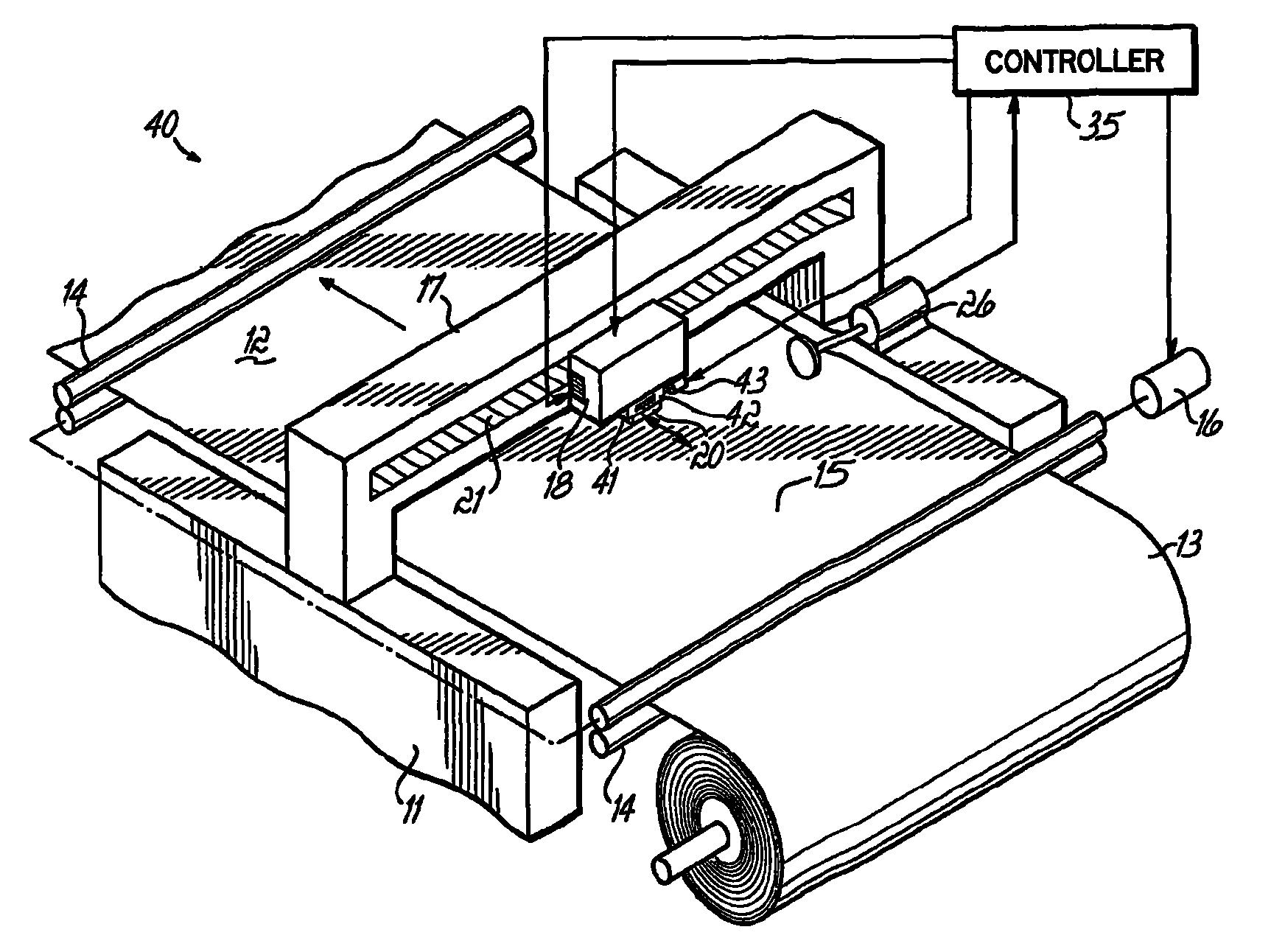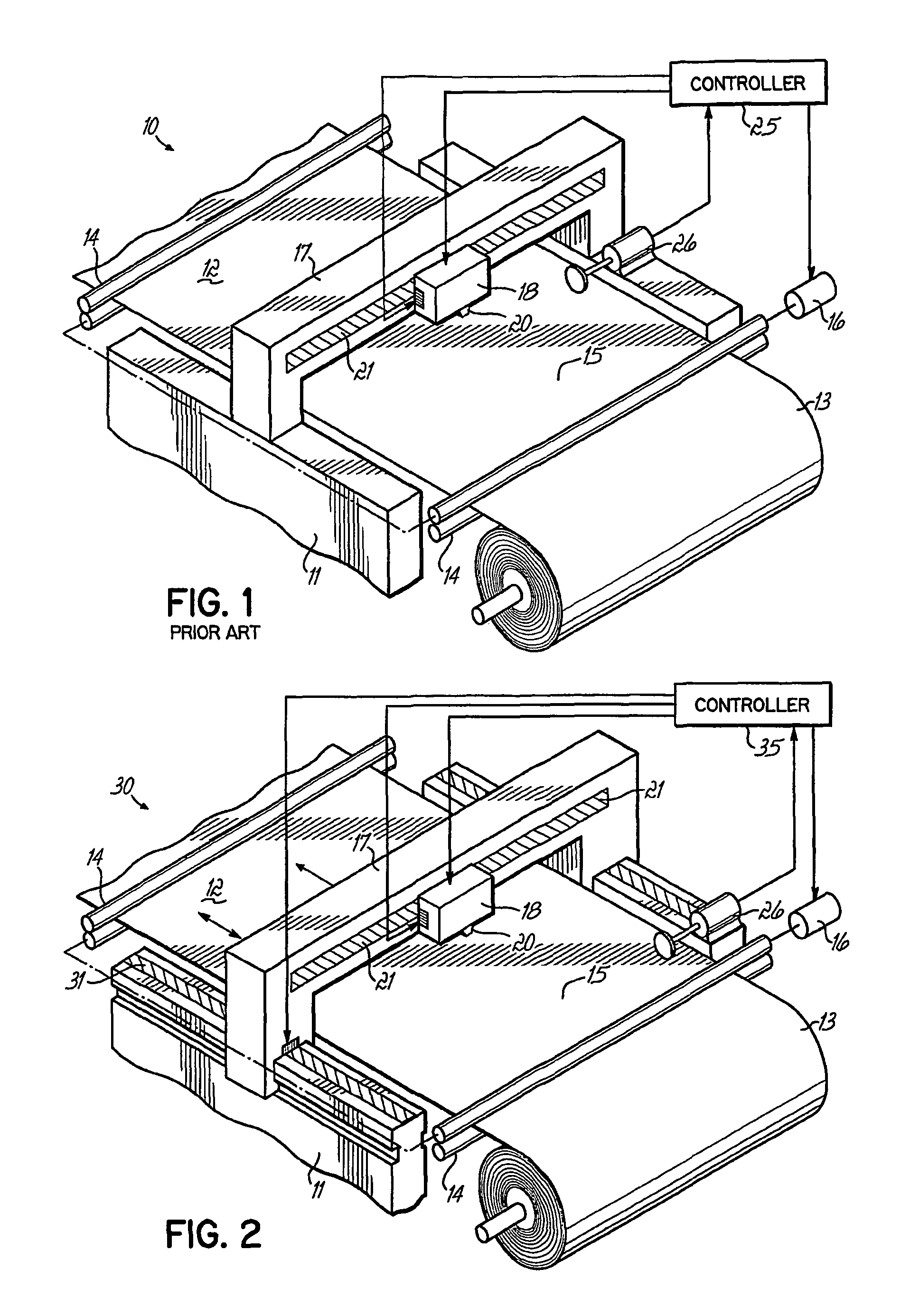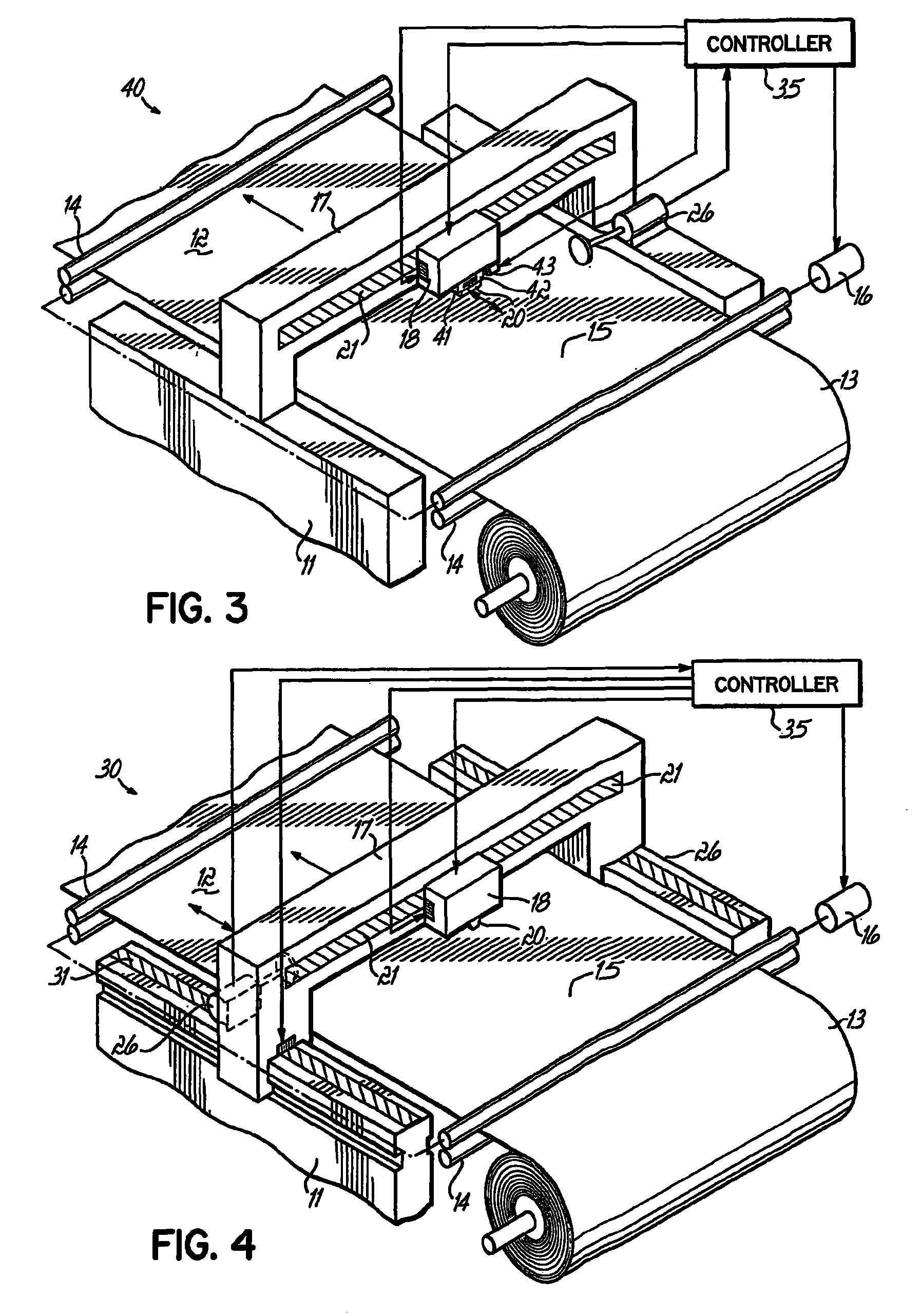High precision feed particularly useful for UV ink jet printing on vinyl
a high-precision, vinyl-based technology, applied in the direction of printing, typewriters, other printing apparatus, etc., can solve the problems of limiting the resolution of the image being printed and the overall quality of the image, uv-curable inks without some of the disadvantages of occupational and environmental hazards, and low-absorption substrates, etc., to achieve the effect of increasing precision
- Summary
- Abstract
- Description
- Claims
- Application Information
AI Technical Summary
Benefits of technology
Problems solved by technology
Method used
Image
Examples
Embodiment Construction
[0017]In FIG. 1, an ink-jet printing apparatus 10 of the prior art is illustrated. The apparatus 10 includes a frame 11 having a substrate support plane 12 over which a substrate 15 is supported. The substrate 15 is illustrated as a web of material that is longitudinally fed from a roll supply 13 thereof, along the frame 11 and over the support plane 12, by one or more sets of feed rolls 14 that are mounted to rotate on the frame 11. A drive motor 16, which may be a servo drive motor, advances the substrate 15 past a bridge 17, which is fixed to the frame 11, and on which bridge is mounted a carriage 18 to move on the bridge 17 in a direction transverse to that of the feed. The carriage 18 has mounted thereon one or more ink-jet printheads 20, which it carries with it transversely across the frame 11. The carriage 18 is moved across the bridge 17 by a linear servo motor 19 carried by the bridge 17 and the carriage 18. The printheads 20 include nozzles (not shown), which are directed...
PUM
 Login to View More
Login to View More Abstract
Description
Claims
Application Information
 Login to View More
Login to View More - R&D
- Intellectual Property
- Life Sciences
- Materials
- Tech Scout
- Unparalleled Data Quality
- Higher Quality Content
- 60% Fewer Hallucinations
Browse by: Latest US Patents, China's latest patents, Technical Efficacy Thesaurus, Application Domain, Technology Topic, Popular Technical Reports.
© 2025 PatSnap. All rights reserved.Legal|Privacy policy|Modern Slavery Act Transparency Statement|Sitemap|About US| Contact US: help@patsnap.com



